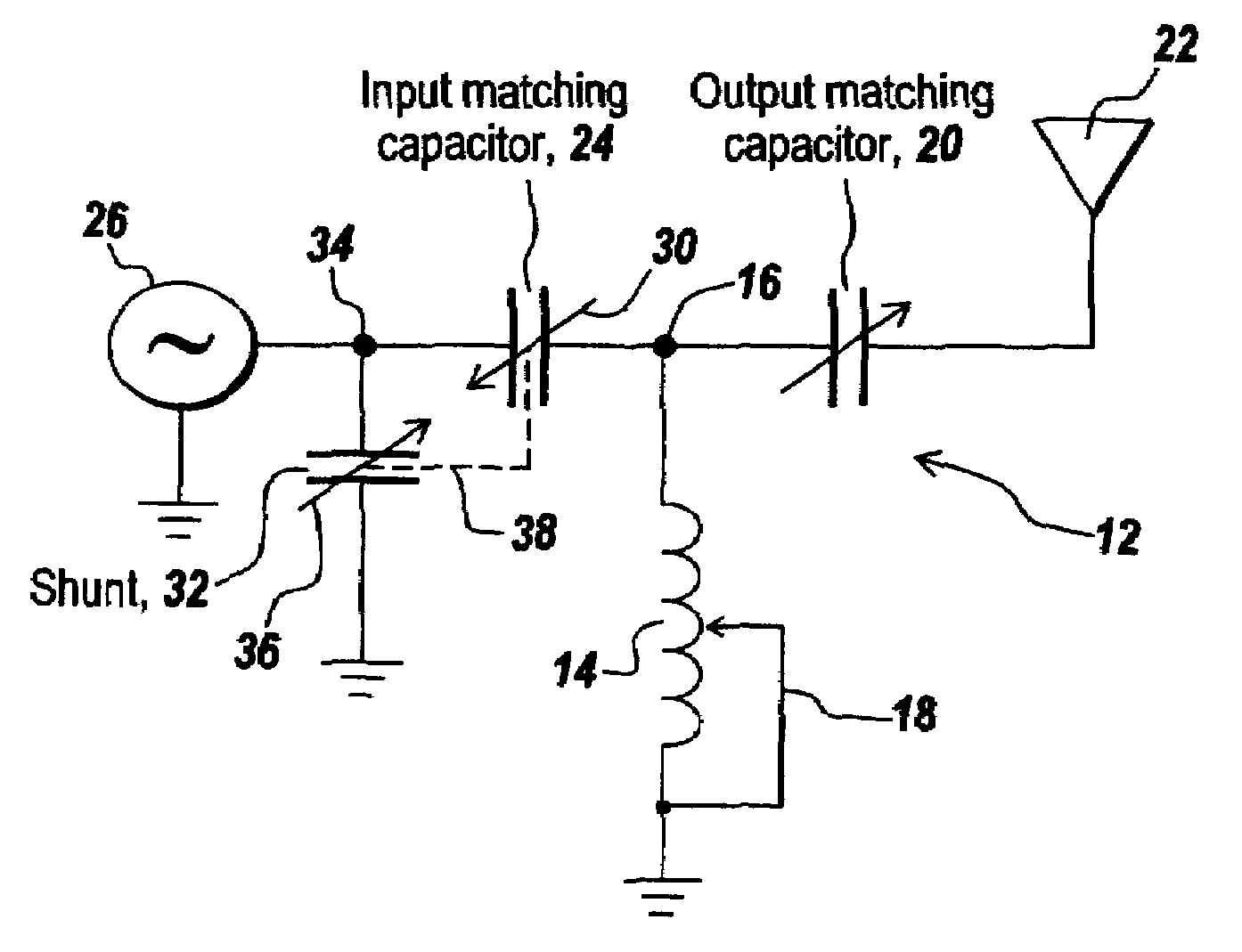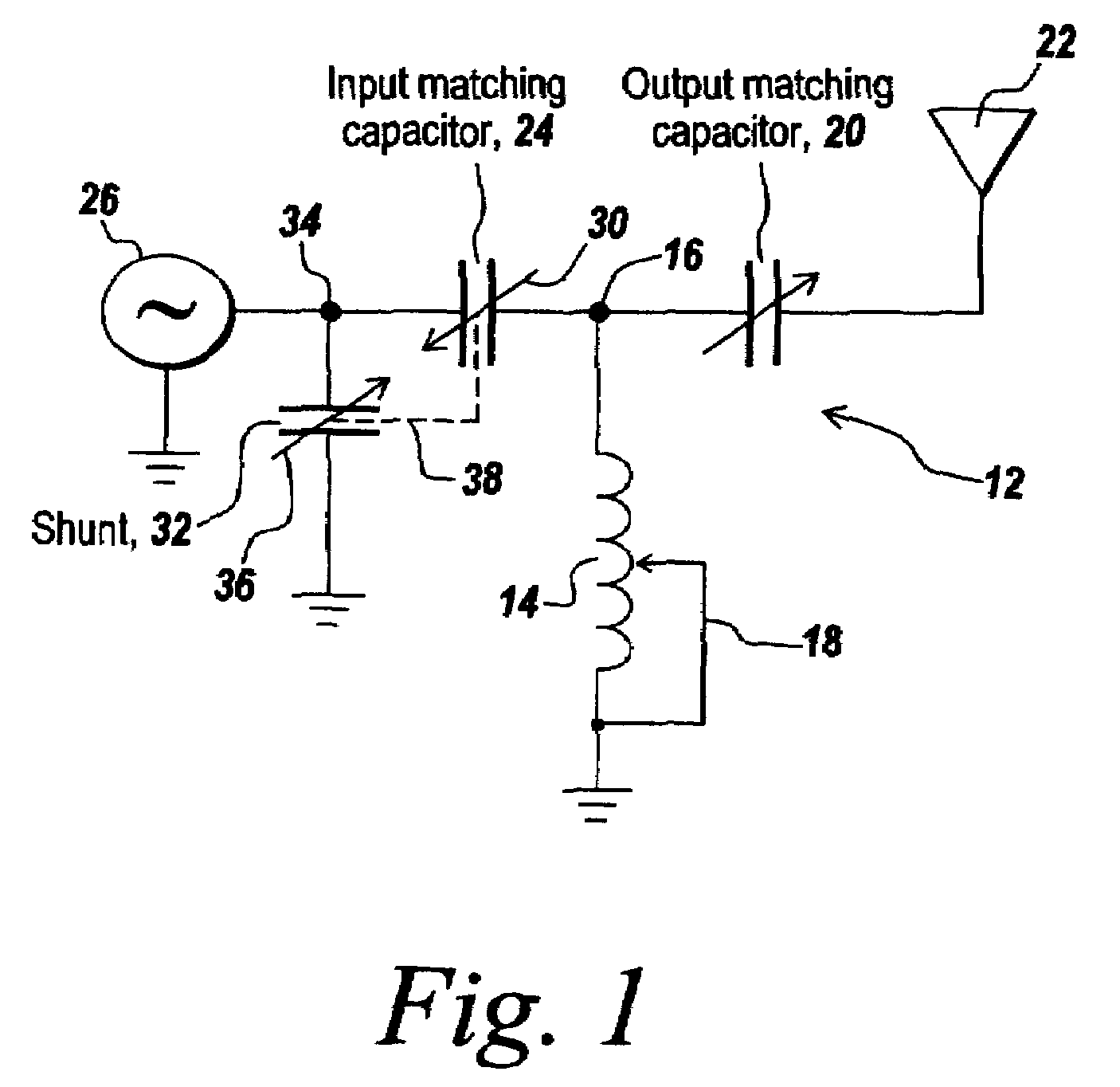Extended matching range tuner
a tuner and range technology, applied in the field of antenna tuning, can solve the problems of limiting the lowest load impedance that can be matched, not effectively in the circuit, and almost fully disengage the capacitor, so as to increase the capacitance of the shunt capacitor, reduce the capacitance of the variable input matching capacitor, and achieve high frequency matching
- Summary
- Abstract
- Description
- Claims
- Application Information
AI Technical Summary
Benefits of technology
Problems solved by technology
Method used
Image
Examples
Embodiment Construction
[0044]Referring now to FIG. 1, a T network antenna tuner 12 has a tapped or variable inductor 14 connected between ground and a point 16. Inductor 14 is provided with a tap 18 so that the inductance can be readily varied.
[0045]A variable output matching capacitor 20 is coupled between point 16 and antenna 22, whereas a variable input matching capacitor 24 is connected between point 16 and a signal source 26. Signal source 26 is typically a transmitter having an output impedance of 50 ohms. Capacitor 24 has an arrow 30 going down through it and pointing downwardly to the left, whereas a shunt capacitor 32 connected between signal source input 34 and ground has an arrow 36 pointed in a direction opposite to arrow 30. As can be seen by dotted line 38, the two capacitors, namely capacitor 24 and capacitor 32, are ganged together or arranged such that decreasing the capacitance of capacitor 24 results in increasing the capacitance of capacitor 32. The increased shunt capacitance assists ...
PUM
 Login to View More
Login to View More Abstract
Description
Claims
Application Information
 Login to View More
Login to View More - R&D
- Intellectual Property
- Life Sciences
- Materials
- Tech Scout
- Unparalleled Data Quality
- Higher Quality Content
- 60% Fewer Hallucinations
Browse by: Latest US Patents, China's latest patents, Technical Efficacy Thesaurus, Application Domain, Technology Topic, Popular Technical Reports.
© 2025 PatSnap. All rights reserved.Legal|Privacy policy|Modern Slavery Act Transparency Statement|Sitemap|About US| Contact US: help@patsnap.com



